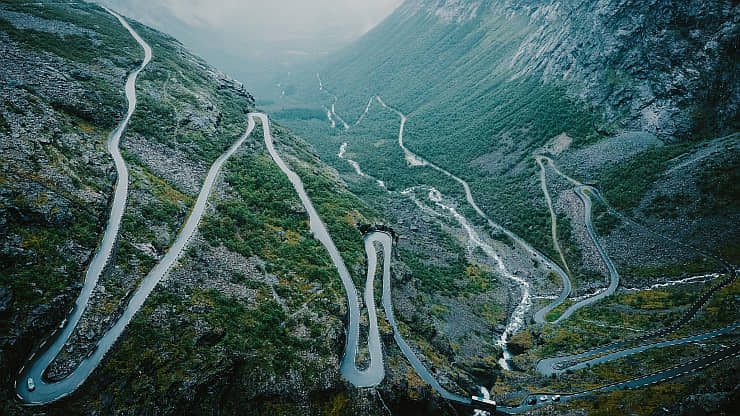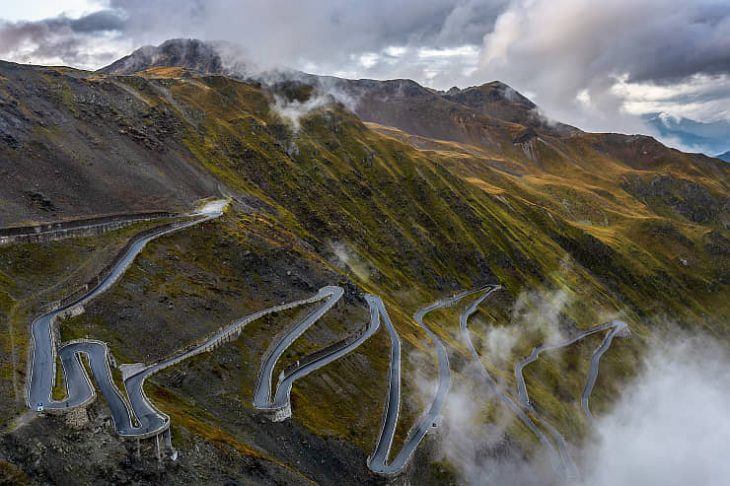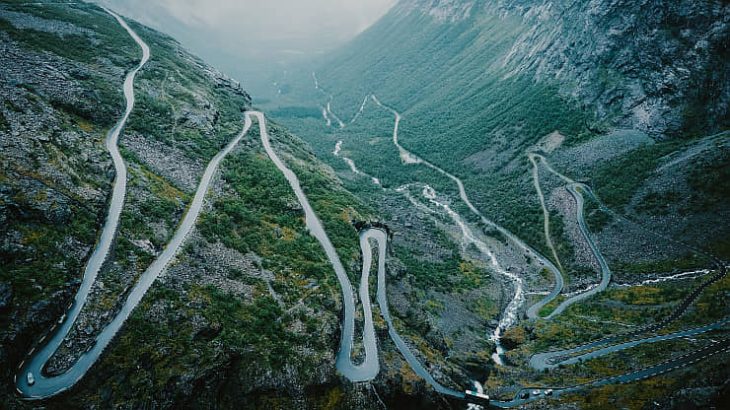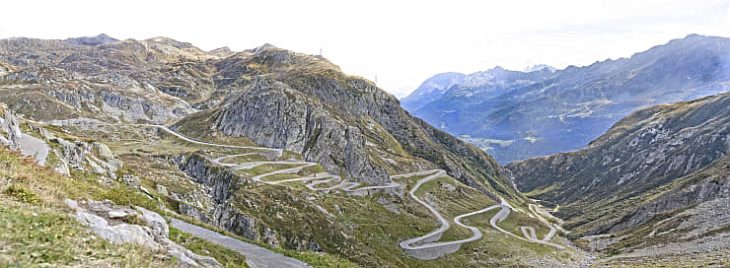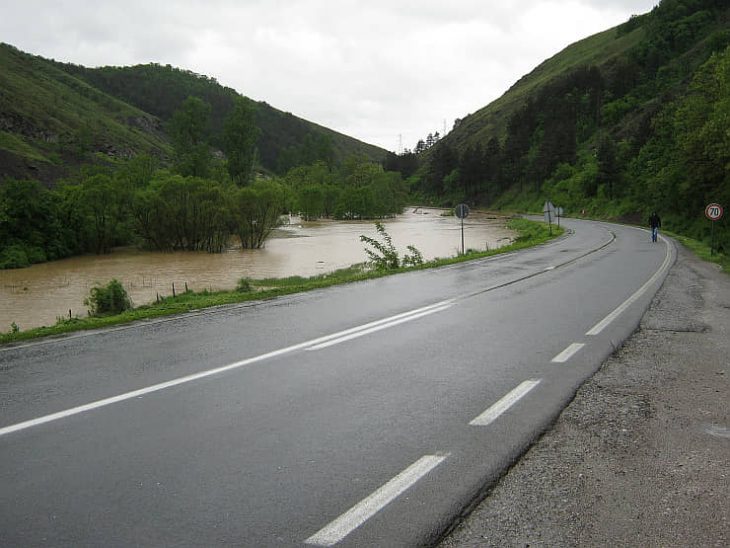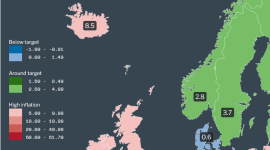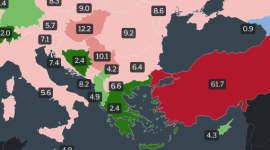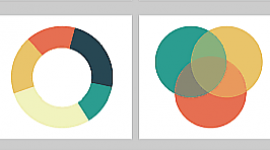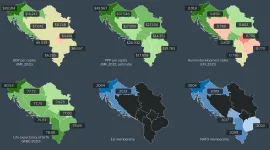Introduction
Europe is known for its beautiful landscapes, rich history, and diverse cultures. With an extensive network of roads connecting the continent, it’s no wonder that road trips are a popular way to explore Europe. However, not all roads are created equal, and some can be incredibly dangerous or challenging to navigate.
Based on the WEF Global Competitiveness Report 2019 report and other resources, this article explores the worst roads in Europe. It’s covers factors that contributing to their hazardous nature and how to stay safe while traveling on these treacherous paths.
This article is a follow-up to one of our most popular articles ever published, “Road quality in Europe: the best and worst roads in Europe“. In that post, a map with scores for every country and a table was made.
This article is somewhat different. In it, a number of the most dangerous (not necessarily the worst in terms of their build quality!) roads in Europe are covered. As such, they are not necessarily related to the actual, overall country ranking.
For example, while Norway has decent road infrastructure, one of its roads has secured its place on this list.
Other countries listed are Romania, Italy, Switzerland, Serbia, and Bosnia and Herzegovina.
Transfăgărășan, Romania
With a WEF ranking of 37th (out of 40 countries surveyed) and a road quality score of 3.0 (out of 7.0), Romania’s roads are among the worst in Europe.
One of the most notorious roads is the Transfăgărășan Highway. Romania’s Transfăgărășan Highway is known for its stunning views and hair-raising twists and turns.
Built between 1970 and 1974, this 90-kilometer road climbs to an altitude of 2,042 meters (6,699 feet), making it the second-highest paved road in the country. The highway features sharp hairpin turns, steep inclines, and narrow lanes, making it particularly treacherous during bad weather. Although the views are breathtaking, it is essential to stay focused and drive cautiously on this road.
Stelvio Pass, Italy
The Stelvio Pass continues to be one of the most perilous mountain passes in Europe, despite Italy’s relatively okay ranking of 23rd in the WEF report with a score of 4.4.
One of the highest and riskiest mountain passes in Europe is the Stelvio Pass in Italy. This pass, which is located at an elevation of 2,757 meters (9,045 feet), is only open from late May to early November because of the intense snowfall in winter. The road is well-known for its 48 hairpin turns, constricting lanes, and precipitous drops. While traveling on this dangerous pass, it is essential to maintain a slow speed and be ready for sudden weather changes despite the breathtaking scenery.
Trollstigen, Norway
Norway ranks 20th in the WEF report with a score of 4.5, but the Trollstigen, or “Troll’s Ladder,” remains a challenging and dangerous road in the country’s Rauma Municipality.
With a series of 11 hairpin turns and an elevation gain of 405 meters (1,328 feet), this road can be quite challenging. Although the road is well-maintained, frequent fog, rain, and snow can make for dangerous driving conditions. It is essential to be cautious and adhere to the posted speed limits while navigating Trollstigen.
Gotthard Pass, Switzerland
Switzerland has the second-highest overall WEF ranking for road quality in Europe, with a score of 6.3. Their roads are extremely good not just in Europe but also considered as one of the best roads in the world.
However, the Gotthard Pass, a historic mountain pass in the Swiss Alps, remains a challenging drive. The road features numerous hairpin turns, narrow sections, and a steep elevation change. It is also prone to sudden weather shifts and can be covered in snow even during the summer months. Caution and a well-maintained vehicle are essential when driving on the Gotthard Pass.
Ibarska magistrala (Državni put 22), Serbia
Serbia ranks 33rd in the WEF report with a road quality score of just 3.5. It’s a home to some of the worst European roads. (Although, the situation is improving in recent years!).
One of the most notorious roads in the country is the Ibarska Magistrala, also known as the Highway of Death. This 300-kilometer-long road connects Belgrade, the Serbian capital, with the Montenegrin coast. The road’s narrow lanes, sharp turns, and steep inclines, combined with heavy traffic and reckless driving, make it one of the most dangerous roads in Serbia. Drivers should exercise extreme caution and remain vigilant while traveling on the Ibarska Magistrala.
M18, Bosnia and Herzegovina
Bosnia and Herzegovina ranks 39th in the WEF report with a road quality score of 2.8 – the second-worst in all of Europe.
The M18 road is one of the most challenging roads in the country. This road stretches from Sarajevo to the eastern part of the country, passing through beautiful but treacherous mountains.
The M18 features narrow lanes, sharp bends, and sudden changes in elevation, making it particularly hazardous during inclement weather. It is essential to drive cautiously and maintain a safe speed while navigating this road.
The table of road quality rankings
| COUNTRY | SCORE | RANK |
|---|---|---|
| Netherlands | 6.4 | 1 |
| Switzerland | 6.3 | 2 |
| Austria | 6.0 | 3 |
| Portugal | 6.0 | 4 |
| Spain | 5.7 | 5 |
| Croatia | 5.6 | 6 |
| Denmark | 5.6 | 7 |
| Luxembourg | 5.5 | 8 |
| France | 5.4 | 9 |
| Finland | 5.3 | 10 |
| Germany | 5.3 | 11 |
| Sweden | 5.3 | 12 |
| Cyprus | 5.1 | 13 |
| Turkey | 5.0 | 14 |
| Slovenia | 4.9 | 15 |
| UK | 4.9 | 16 |
| Lithuania | 4.8 | 17 |
| Estonia | 4.7 | 18 |
| Greece | 4.6 | 19 |
| Norway | 4.5 | 20 |
| Belgium | 4.4 | 21 |
| Ireland | 4.4 | 22 |
| Italy | 4.4 | 23 |
| Poland | 4.3 | 24 |
| Iceland | 4.1 | 25 |
| Hungary | 4.0 | 26 |
| Slovakia | 4.0 | 27 |
| Albania | 3.9 | 28 |
| Czechia | 3.9 | 29 |
| Montenegro | 3.9 | 30 |
| Latvia | 3.6 | 31 |
| Russia | 3.5 | 32 |
| Serbia | 3.5 | 33 |
| Bulgaria | 3.4 | 34 |
| North Macedonia | 3.4 | 35 |
| Malta | 3.3 | 36 |
| Romania | 3.0 | 37 |
| Ukraine | 3.0 | 38 |
| Bosnia and Herzegovina | 2.8 | 39 |
| Moldova | 2.6 | 40 |
Conclusion
Europe offers a diverse and beautiful landscape, perfect for exploring via road trips. However, it is essential to be aware of the potential dangers and challenges that some of the continent’s worst roads present. By understanding the risks associated with these roads, travelers can take appropriate precautions and ensure a safer journey.
This article has highlighted eight of the most dangerous roads in Europe, based on the World Economic Forum’s report and other resources.
Despite the challenges that these roads pose, they are often surrounded by stunning landscapes, with breathtaking views. They are offering unique experiences for those who choose to traverse them.
For a comprehensive look at road quality in Europe, we invite you to check our full blog post, “Road Quality in Europe: The Best and Worst Roads in Europe,” complete with maps and detailed resources.
That post provides a broader perspective on the state of road infrastructure across the continent, allowing you to make informed decisions when planning your next European road trip.
Safe travels! Sretan put!
Here’s how you can support us
We hope you like our content. You can support us in several ways. If you use ad-blocking software, please consider adding us to a safelist. When sharing our content, please link back to the source. When sharing on Instagram, please tag @viborccom. The same is for Twitter (@viborccom).
Thanks! Hvala! Danke! Дякую!
ABOUT THE AUTHOR
